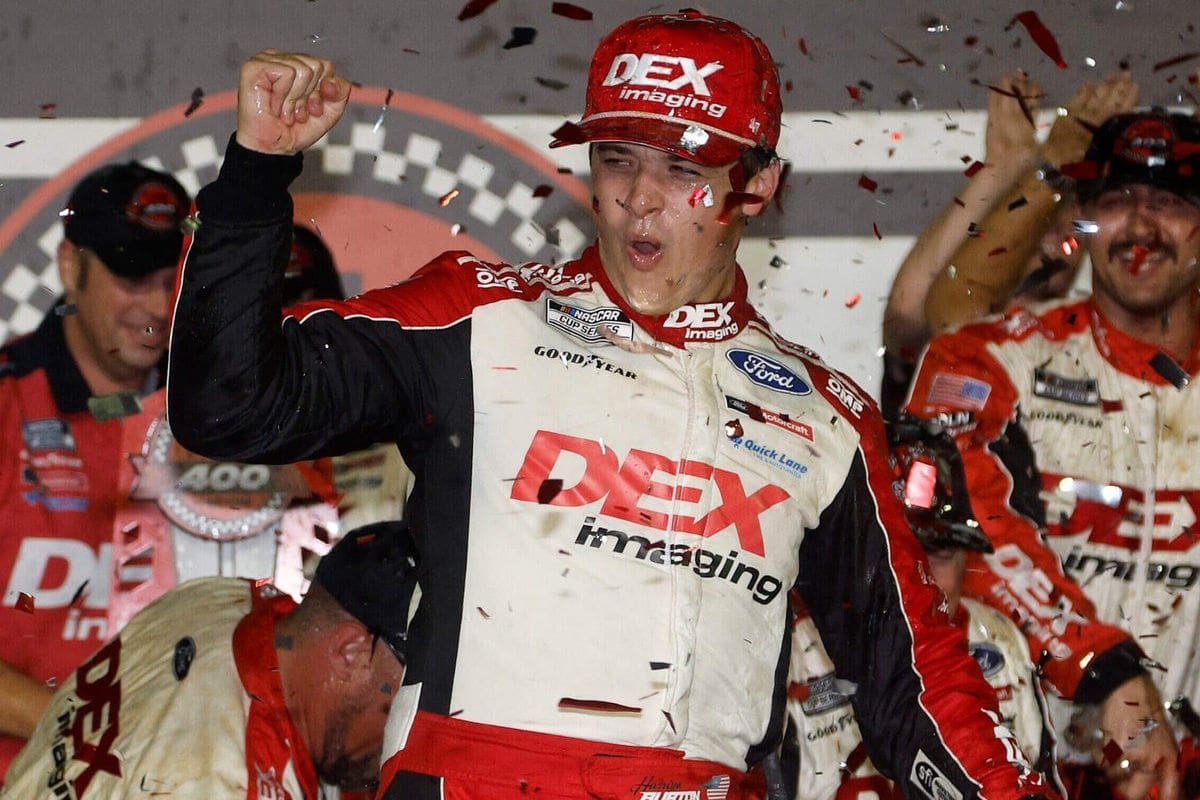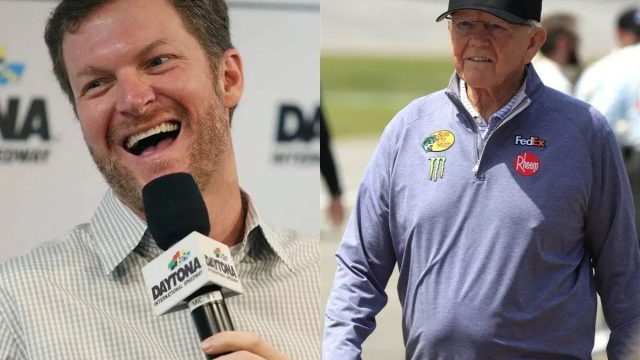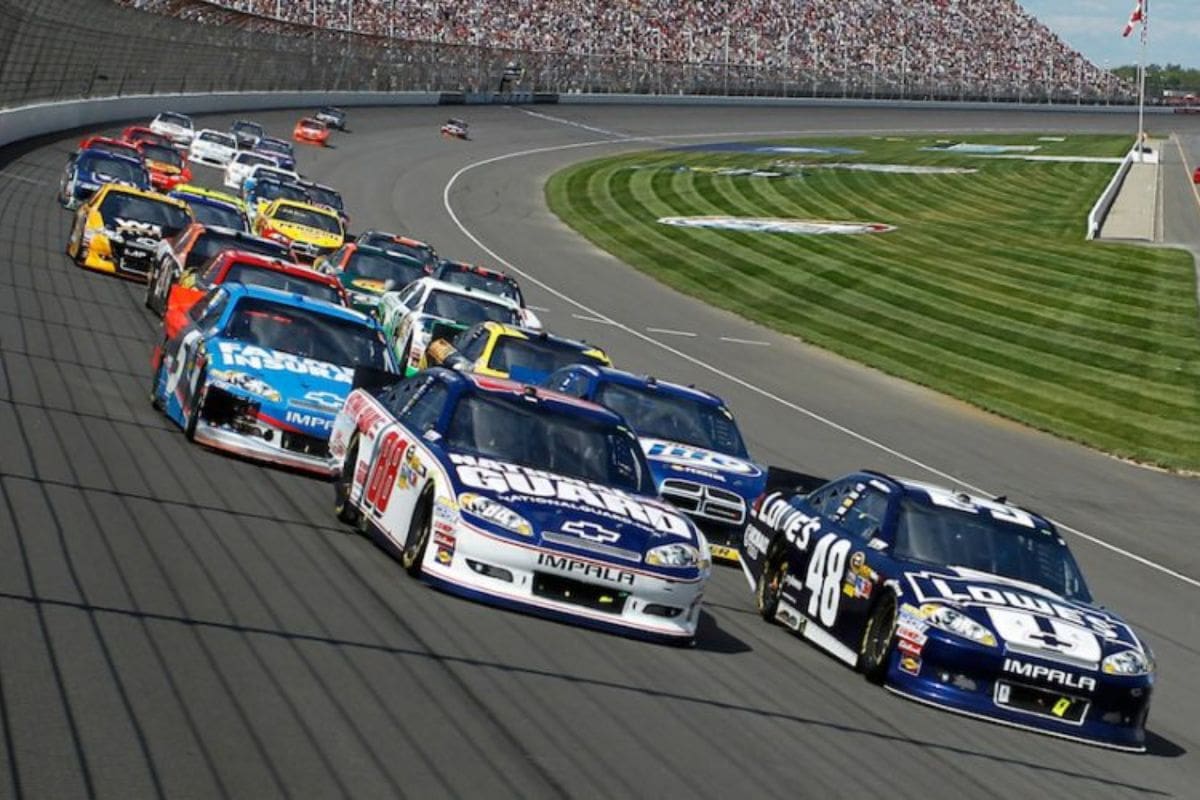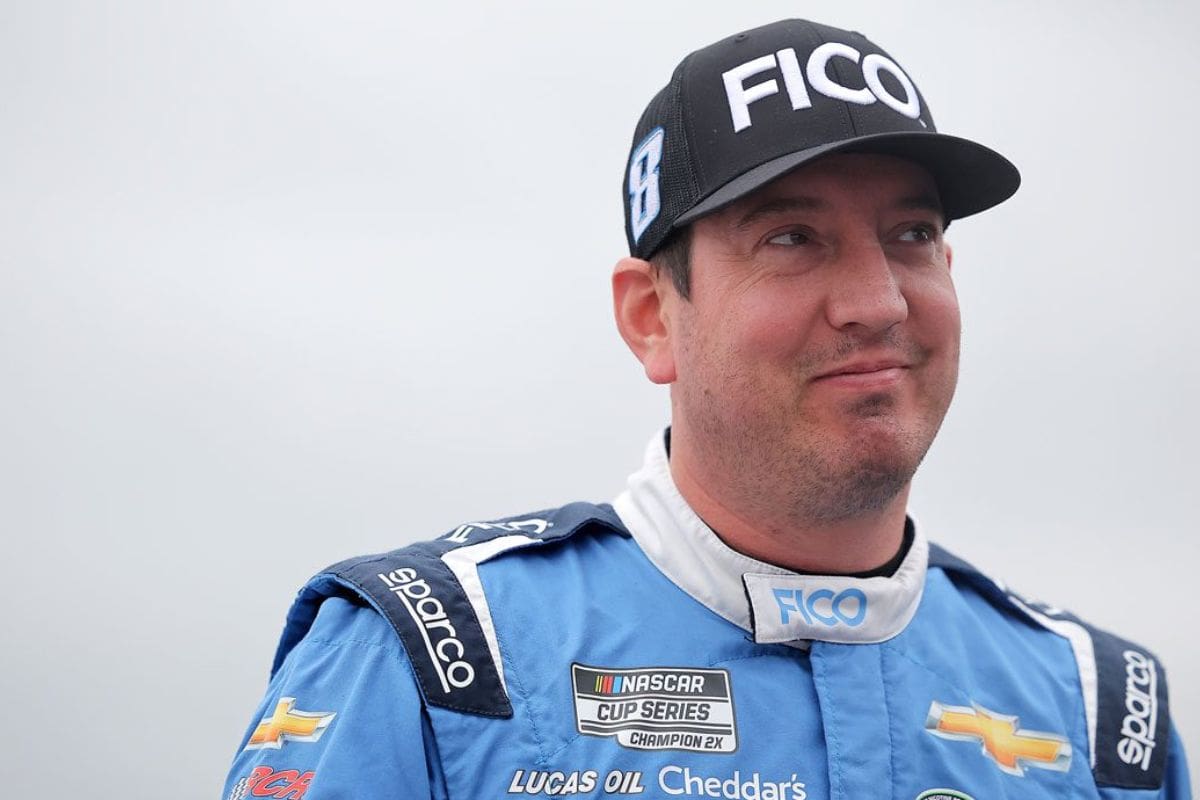Dale Jr. Calls Out Joe Gibbs: Dale Earnhardt Jr.‘s recent commentary on Joe Gibbs Racing sheds light on the troubling path of Harrison Burton‘s career, raising critical questions about the support structures in place for emerging talent. His observations suggest a disconnection between driver potential and vehicle performance, particularly when contrasted with the success of veterans like Kyle Busch. As Burton grapples with consistency and competitive placement, the implications of management decisions within JGR come into sharp focus. What does this mean for the future of both Burton and the organization as a whole? The answers may reveal deeper issues within the NASCAR framework.
Key Highlights
- Dale Jr. criticized Joe Gibbs for inadequate support and development opportunities for young drivers like Harrison Burton.
- Harrison Burton’s struggles reflect a disconnect between his potential and the performance of JGR equipment.
- Team dynamics and resource allocation at JGR hindered Burton’s growth and consistency in NASCAR.
- Burton’s recent victory signals a turning point, but sustained support is essential for future success.
- Dale Jr.’s comments highlight broader concerns about driver development practices within NASCAR and JGR’s organizational accountability.
The Importance of Car-Driver Connection
The car-driver connection is a crucial element in motorsport, often determining a driver’s ability to harness their vehicle’s full potential. This synergy is not merely a matter of physical control; it encompasses an understanding of the car’s dynamics and performance characteristics. Exceptional drivers possess the innate ability to translate their skills into successful navigation of the complexities presented by their machines, achieving results even in suboptimal conditions.
Historically, there have been instances where drivers have succeeded in vehicles deemed inferior or challenging by their peers. This distinction sets elite drivers apart—those who can coax extraordinary performance from an average car. The ability to adapt and refine their approach in response to a car’s quirks is what often leads to remarkable achievements.
In the case of Harrison Burton, Dale Earnhardt Jr. has pointed out that his potential has been stifled by the inconsistent nature of Joe Gibbs Racing cars. This inconsistency can hinder a driver’s ability to form that critical connection, resulting in a missed opportunity to highlight their talents. Burton’s skill set, while impressive, requires a more reliable platform that empowers him to compete at the highest levels.
The importance of the car-driver connection cannot be overstated. It serves as the foundation upon which the success is built in motorsport. When this connection falters, as seen with Burton at JGR, the implications extended beyond individual performance, impacts the broader narrative of a driver’s career path.
Problems with JGR Cars
Inconsistent performance among Joe Gibbs Racing (JGR) cars has raised questions about the team’s general competitiveness, especially in the context of driver development and success. Despite having a roster of talented drivers, including Denny Hamlin and the promising Ty Gibbs, JGR has struggled to maintain dominance on the track. This inconsistency suggests underlying issues that extends beyond driver ability, hinting at potential shortcomings in the equipment itself.
While Dale Earnhardt Jr. acknowledges the capability of certain drivers to thrive in JGR cars, he highlights a troubling trend: even high-caliber talents struggle to secure top finishes. For instance, Gibbs, fresh off his Xfinity Championship, finds himself outside the top five rankings, while Hamlin’s misfortunes have left him at eighth. Christopher Bell, despite showing talent, remains at sixth and also he is not a championship contender.
I think they’ve got a couple of good drivers in their cars and they don’t dominate, right? Only a couple of people would get in the Gibbs car and dominate; Kyle Busch and Ty Gibbs for the most part, right? DIenny Hamlin, somewhat.”- jr
These results prompt a deeper examination of the balance between driver skill and car performance. Effective driver development hinges on providing competitive equipment, and the current output from JGR raises concerns about whether they are delivering the crucial support for their drivers to excel.
The apparent disconnect between driver potential and race outcomes could stem from insufficient engineering, suboptimal setups, or even a lack of adaptability in response to evolving race conditions.
For JGR to reclaim its status as a powerhouse in NASCAR, a critical reassessment of their vehicle performance and engineering strategies is vital. Without this, the team’s drivers may continue to face a challenging path to success.
Kyle Busch’s Success with JGR
Kyle Busch’s tenure at Joe Gibbs Racing (JGR) stands out as a remarkable success story, marked by an unmatched level of achievement in the NASCAR Xfinity Series. His dominance is highlighted by an astounding 90 wins with JGR, a staggering feat that constitutes nearly 87% of his total victories in the series. This level of performance not only sets him apart from his peers but also establishes a benchmark so that no other driver can come closely to achieve.
In addition to his Xfinity accomplishments, Busch’s skill extends to the NASCAR Cup Series, where he has amassed nearly 200 wins and secured two championships under the JGR banner. This remarkable consistency emphasizes his ability to adapt and excel across different competition levels, solidifying his status as one of the elite drivers in NASCAR history.
Busch’s success with JGR illuminates the clear contrast to the struggles faced by other drivers in the organization, such as Harrison Burton. While Burton has shown potential with playoff appearances, his four wins in three years raise questions about the underlying factors contributing to his limited success.
This disparity not only highlights Busch’s exceptional talent but also prompts a deeper analysis of JGR’s driver development strategies and the general competitive environment within the team.
Harrison Burton’s Recent Performance
After three challenging seasons in the NASCAR Cup Series, Harrison Burton has recently emerged as a driver to watch, clinching his initial victory and securing a spot in the Playoffs. This essential achievement marks a considerable turning point in Burton’s career, especially as he stood on the precipice of being replaced in the #21 car. His recent success not only reinvigorates his standing within the team but also raises questions about his future in the series.
Burton’s expedition reflects the intricate dynamics of performance in NASCAR. Similar to Kyle Busch’s struggles with Richard Childress Racing, Burton’s earlier seasons were blemished by difficulties in extracting the full potential of his vehicle. The key takeaway from Busch’s turnaround is the importance of having the right equipment tailored to a driver’s strengths. RCR’s commitment to construct a competitive car for Busch demonstrates how vital team support is in achieving success.
Burton’s victory signals that he may have ultimately found the synergy between driver and machine, showcasing his ability to capitalize on opportunities when they arise. While one win does not solidify a long-term future, it certainly improves his prospects for remaining within the elite ranks of NASCAR.
The stress remains, however, as the series continues to evolve and competitors refine their strategies. For Burton, consistency will be the next hurdle, as he must build on this momentum to secure his place beyond the current season.
Burton’s Future Prospects
Looking ahead, the path of Harrison Burton’s career hinges on his ability to harness the momentum gained from his recent victory. This win not only marked a notable milestone for Wood Brothers Racing (WBR), as it celebrated its 100th victory, but it also provides Burton with a renewed sense of credibility in a sport where consistency is paramount.
“Harrison outruns or runs with anyone else really that’s gotten that equipment.”– Dale Jr.
Dale Earnhardt Jr.’s observation of the challenges faced by the #21 car highlights that Burton’s struggles have not been solely his own; they stemmed from a combination of factors within the team dynamics and equipment performance.
“I think that I watched that #21 car closer than I think a lot of people might…and it’s been a tough year.” – Dale Jr
As Burton prepares for the 2024 season, aligning himself with a team that can provide the necessary resources and support will be critical. His performance suggests that he possesses the capability to compete at a high level, as evidenced by his ability to run competitively with peers in comparable equipment.
However, to transform potential into tangible success, he must secure a more supportive environment that prioritizes his development and race day strategies.
The narrative surrounding Burton has often labeled him as an underdog, a sentiment that could work in his favor if he is accepted by a team ready to invest in his growth. If Burton can capitalize on his recent success and find the right fit, he stands a strong chance of silencing critics and positioning himself as a contender for the 2024 Playoffs.

News in Brief: Dale Jr. Calls Out Joe Gibbs
The analysis of Harrison Burton’s stalled career within Joe Gibbs Racing highlights the critical need for improved developmental support for young drivers. By fostering a more accountable and cohesive team environment, JGR can potentially revitalize Burton’s path and overall competitiveness. Addressing management decisions and improving the car-driver connection will be fundamental in steering through the challenges faced by emerging talents. A tactical reevaluation may ultimately lead to a stronger future for both Burton and the organization within the NASCAR landscape.
ALSO READ: Dale Jr’s Legendary Race Car Auctioned Off for Surprisingly Low Price


